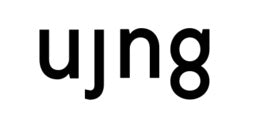
Julian Rehbock works literally in a further dimension.
Rather than sewing two dimensional pattern pieces together, each piece is wrapped around one of at least two sculptures for each individual size. The sculpture defines the fit of the garment.
A sculptural wrapping technique and the use of several metres long single pattern pieces makes the development and also the manufacturing process extremely time-consuming and technically highly challenging. The interaction between the multi-layering and the fact that every fabric runs differently enhances the effect.
The results are wearable, unique, negative imprints with an extremely associative look and feel.
Can you tell us a bit more about yourself?
At the age of 19 I decided to work in a mental institution for nine months. I had the chance to work intensively with bipolar and schizophrenic people with a variety of clinical pictures. It puts your view into perspective concerning of who is right and who is the one with real knowledge, when you see a patient completing all the sentences the doctor is trying to say concerning complex medical processes while learning an eighth language as a hobby.
After this influential experience I went to a small fashion school in Germany where I learned clearly defined approaches from the ground up for 3 years to gain a comprehensive knowledge in traditional pattern-making.
What got you into making avant-garde fashion?
A search for an answer to the question of originality got me in the avant-garde scene. I had the feeling that I had tried out every conceivable possibility in pattern-making to create a jacket with a close fitting cut but it felt like drawing paths on a two dimensional predetermined map. The results just looked like a combination of already existing methods to me and nothing is worse than the realisation of one’s own mediocrity. So, I decided to change my plans and put my focus on fabrics especially felt.
I was fascinated by the archaic look and feel and I started an intensive work period of creating my own felts. After some months I started to felt around a sculpture and I began to work more and more hours a night until I had joint and tendon inflammation. To continue working I had to bandage my fingers, my hands, sometimes my elbows and after some painful weeks I had a classical eureka effect while wrapping a bandage around my hand.
Where did you acquire the knowledge of pattern making, finding the proper fabrics and developing the right treatments?
It’s a paradox: forget everything you’ve learned and ask the child in you who only wants to respond to new stimuli. At the same time rely on what you’ve attentively studied over the years but assume that it’s wrong.
What kind of treatment, fabrics or way of pattern making do you use to produce your clothing?
I started my first pieces with over a hundred years old linen that I found on the attic of my grandmother’s house. Time can create a treatment that is incomparably beautiful and uncopyable. I’m obsessed with an authentic naturalness which is always formed out of a chaotic, indefinite state. In the forming process it’s, for example, an up to 5,5m long single fabric piece which gets cut according to a particular principle. All stripes get wrapped around the different parts of a sculpture to create a cohesive structure, a three-dimensional final result: a negative imprint.
Which influences inspired you for your collections? Was there a specific theme, culture or music influence that inspired your designs for this collection?
In search of a universal language I get less obviously inspired by anything but I get definitely inspired by the idea behind it. I try to transfer the feeling of a realisation into my work. I’m fascinated by allegories, metaphors and symbols, which have left their imprint on our culture since the beginning of the human race.
In my opinion Plato’s allegory of the cave reflects perfectly the world we live in and it was presented more than 2300 years ago.
A little bit less abstract thoughts were behind the use of screws. At first sight a screw is only a technical symbol but when you take a closer look you will even find it in the human DNA, the double helix. It means per definition a curve in a three-dimensional space – it sounds rather unspectacular but I got thrilled by that idea. In this case the inspiration was directly placed into the design.
Which design outcome are you the most proud of and why?
It’s a difficult question to answer. A little bit like asking a painter which one of his paintings he loves most but if I had to choose one, I would take one of my first jackets. I like the close fit in which you feel literally wrapped up.
Which designers inspire and challenge you to perform better nowadays?
I really try not to get inspired by any designer because it simply ends in a modification of somebody else’s intellectual achievement. If it wasn’t constructed in my own brain from the very beginning and thereby the result of my own experiences, I would just receive the echo of my own one-dimensional mind. Nevertheless Carol Christian Poell is somebody who really deserves to get named. His work is remarkably sensitive and for me the proof that quality asserts itself.
Are there any designers you would like to collaborate with, and if so, what kind of creation would you like to make?
I would like to collaborate with a shoemaker in the future but at the moment I have enough to do with my own work.
And the last but not least, what can we expect from you in the near future?
I will continue working on myself and on every part of the pieces. Perfecting and adding sculptures and trying to create the first leather prototypes.

